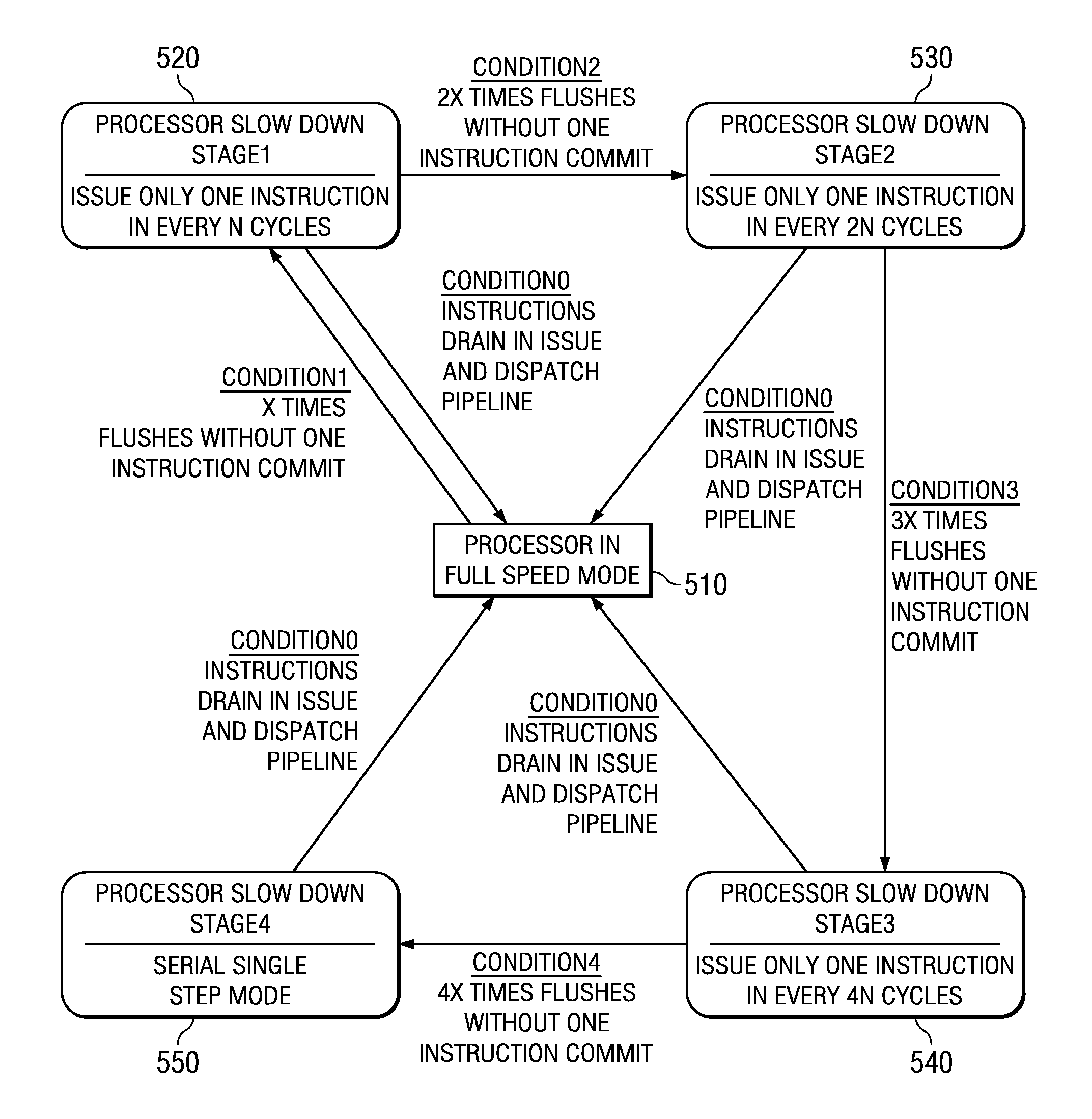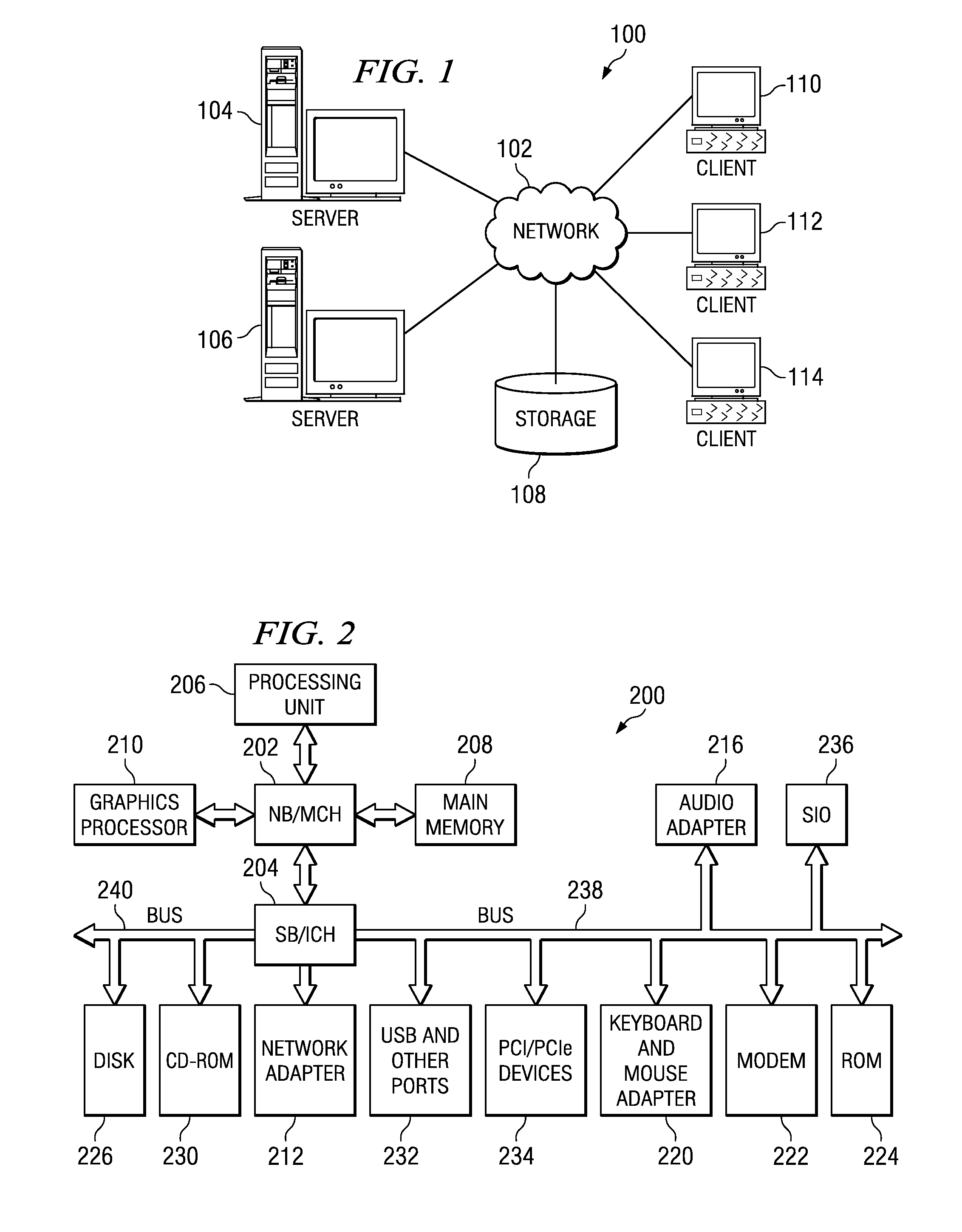Issue unit for placing a processor into a gradual slow mode of operation in response to a detected livelock condition within a processor pipeline
- Summary
- Abstract
- Description
- Claims
- Application Information
AI Technical Summary
Benefits of technology
Problems solved by technology
Method used
Image
Examples
Embodiment Construction
[0045]The illustrative embodiments provide a system and method for placing a processor into a gradual slow down mode of operation in order to break out of a livelock condition. The illustrative embodiments may be implemented in any processor of any computing device. For example, the illustrative embodiments may be used in any of a server computing device, client computing device, communication device, portable computing device, or the like. FIGS. 1-2 are provided hereafter as examples of a distributed data processing environment and computing devices in which exemplary aspects of the illustrative embodiments may be implemented. FIGS. 1-2 are only exemplary and are not intended to state or imply any limitation with regard to the types of computing devices in which the illustrative embodiments may be implemented. To the contrary, the illustrative embodiments may be implemented in any processor regardless of the particular machine or computing device in which the processor is ultimatel...
PUM
 Login to View More
Login to View More Abstract
Description
Claims
Application Information
 Login to View More
Login to View More - R&D
- Intellectual Property
- Life Sciences
- Materials
- Tech Scout
- Unparalleled Data Quality
- Higher Quality Content
- 60% Fewer Hallucinations
Browse by: Latest US Patents, China's latest patents, Technical Efficacy Thesaurus, Application Domain, Technology Topic, Popular Technical Reports.
© 2025 PatSnap. All rights reserved.Legal|Privacy policy|Modern Slavery Act Transparency Statement|Sitemap|About US| Contact US: help@patsnap.com



